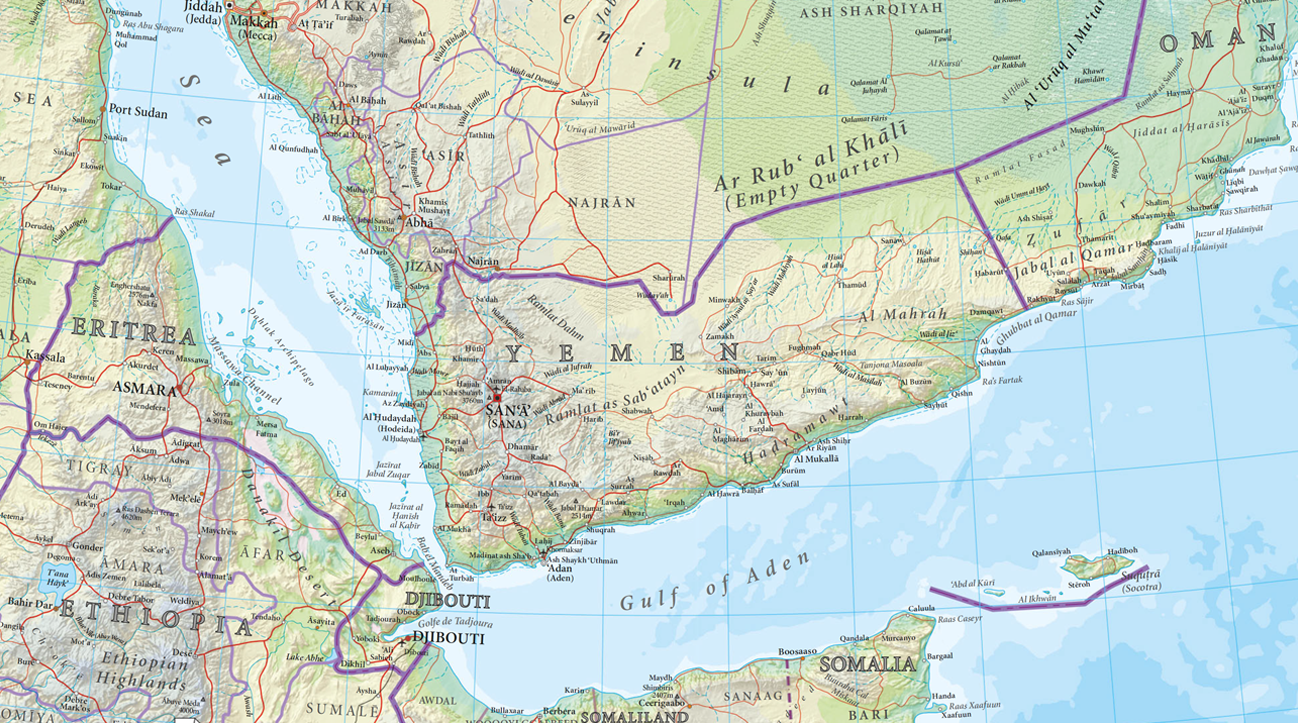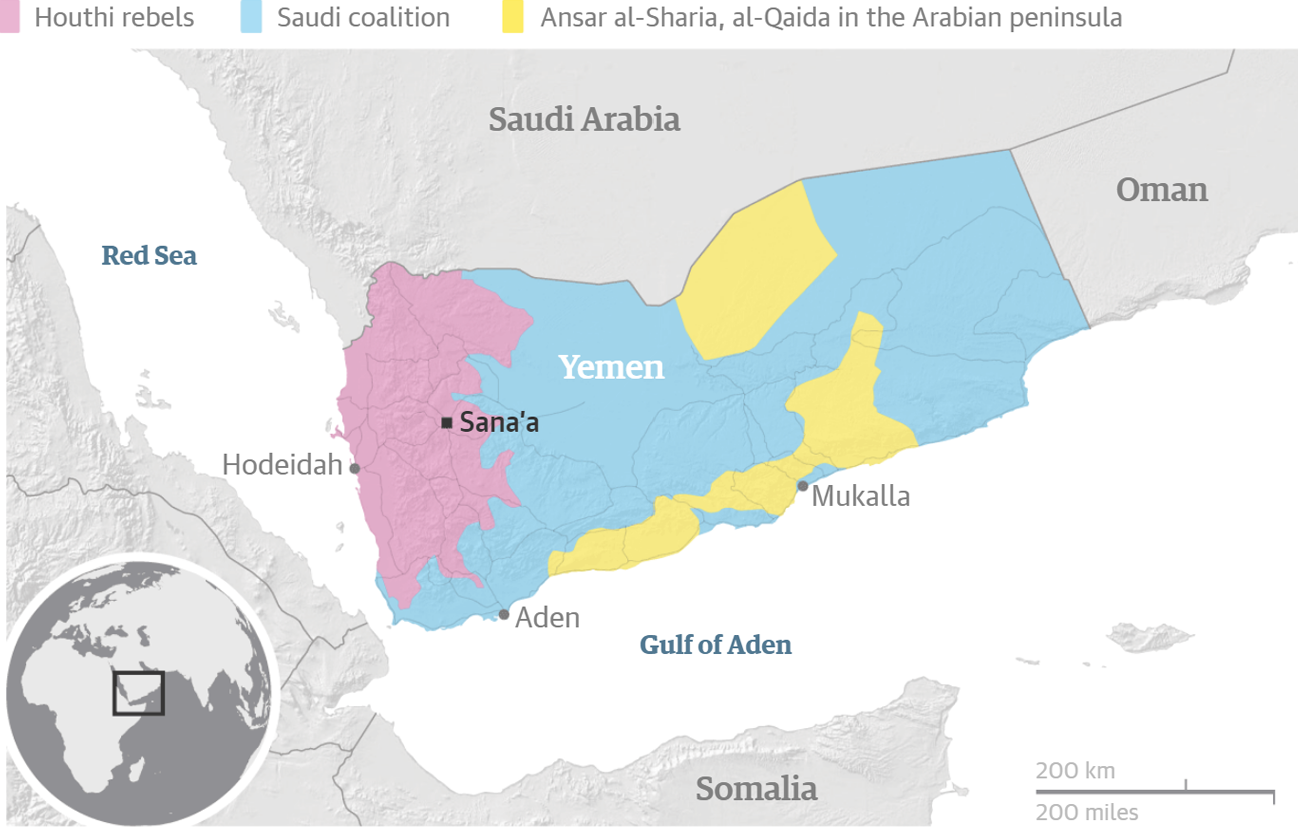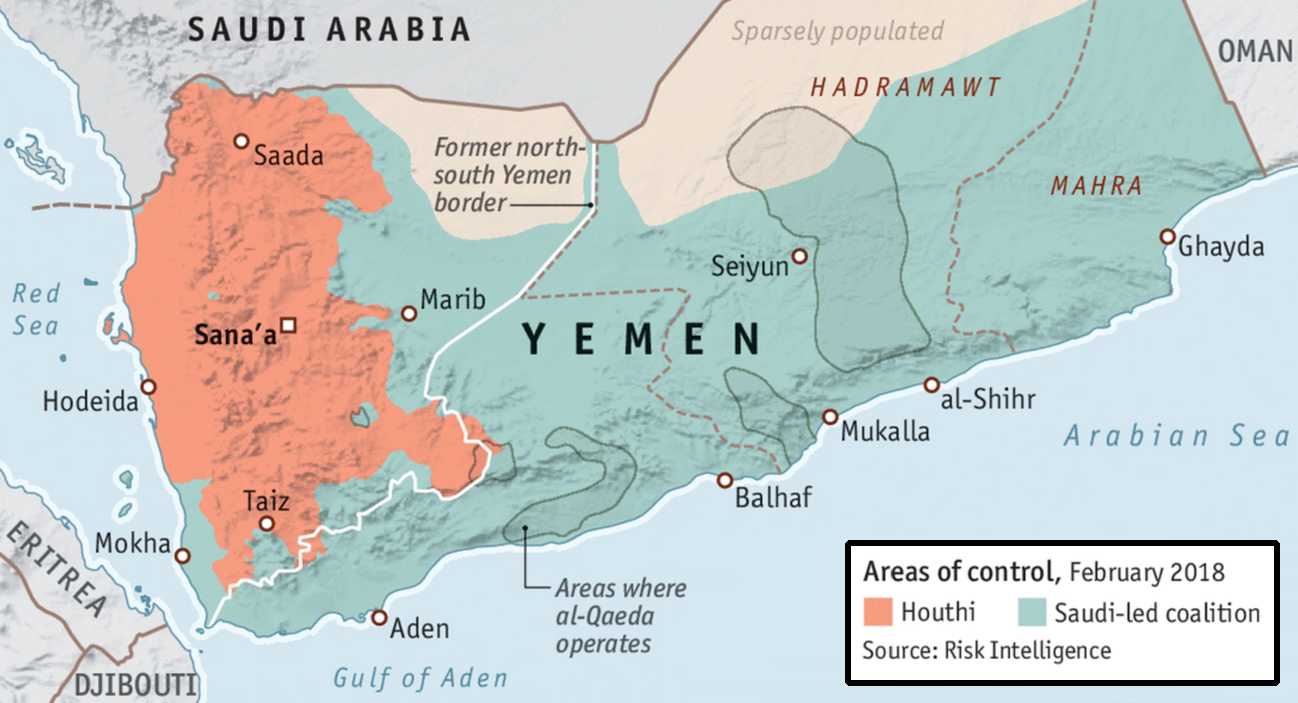According to Ragab (2017), the post-Arab Spring context created “a window of opportunity for Saudi Arabia and the United Arab Emirates to reposition themselves in the region as countries capable of using not only money and diplomacy, but also military means in pursuing their regional policies.”
Map: Yemen

Map: Yemen divided

Map: Yemen fragmented

Saudi Arabia and the UAE have intervened in Bahrain in 2011, in Libya in 2011, in Iraq and Syria against the so-called ‘Islamic State of Iraq and Syria’ (ISIS) since September 2014, and in Yemen since March 2015. As Ragab (2017, p. 38) writes:
Saudi and Emirati foreign policies in the pre-Arab Spring period were characterised by the absence of military means in the region. Thomas Richter and Khaled Almeziani, in their works on Saudi Arabia and the Emirates, used the term “quiet diplomacy” to describe their foreign policy actions. This meant extensive reliance on diplomatic means, and diplomatic efforts that “take place in behind-the-scenes negotiations” which “increase the chance of finding a diplomatic solution”. The two countries used diplomacy based on “compromises, direct negotiations [and] reasonable propositions” to “get the things done” and to secure a role for themselves. In practice, it meant increasing reliance on financial tools, as well as on a broad network of personal relationships with the main policymakers and politicians in the world. It is known that Saudi Arabia has used Islam and oil in pursuing its foreign policies in the region since the 1960s. The UAE is said too to have limited itself to using only two tools in its foreign policies for most of its existence: “conciliation, neighborliness, amicable relations with other countries and peaceful settlements of disputes.”
According to Lauren Morganbesser (2025), since Barak Obama onwards U.S. foreign policy has emphasised the desire to drawdown its military presence in the Middle East in favour of a pivot toward East Asia. In response, several of the Gulf countries have sought to fill the regional vacuum (to the extent that a vacuum actually exists for the U.S. remain very much in situ militarily speaking). With the disintegration of traditional power centers in Egypt, Iraq, and Syria, the oil-rich Arab Gulf have adopted: increasingly assertive foreign policies in nearly every conflict in the Middle East. Their foreign policies have irreversibly shaped the trajectory of the region (including the Abraham Accords).
At the forefront of this regional shift are Saudi Arabia and the neighboring United Arab Emirates (UAE). Both are in many ways unrecognisable from the states they were fifty—or even ten—years ago, due to sweeping economic and social reforms. In Saudi Arabia, Crown Prince Mohammed bin Salman (MBS) has allowed women to drive, curbed the influence of religious clerics, and moved towards diversifying the country’s economy away from oil. In the UAE, the government has spent billions on development and tourism, from building the massive Louvre Abu Dhabi to the world’s tallest building in Dubai. As both countries have grown, so have their images of themselves internationally, becoming powerbrokers in conflicts ranging from Eritrea to Ukraine.
In the process, their relationship has also shifted. Traditionally, the countries have been allies, sharing regional interests centered on security concerns about Iran and common antipathy to Islamists. However, increased influence has also led to an increase in competition between the two. Both countries have become global hubs for business and investment, prompting commercial competition between them as well as divergence on foreign policy issues. Their economic positioning has induced competition, including through Saudi Arabia’s Regional Headquarters program, which requires multinational companies operating in the Middle East to establish their headquarters in the Kingdom, foregoing headquarters in Dubai.
Thus, the Yemeni civil war showcases the increasingly divergent foreign policies of the Saudis and Emiratis. Throughout the civil war, the Saudis and Emiratis have backed different and opposing sides that are necessarily at odds. The two sides differ on two key elements of Yemen’s future: whether to support the southern secession of Yemen or keep the country intact, as well as whether political Islamists should be allowed to be a political force in the country.
Historic old city section of Saada City, Yemen. Photo: Iona Craig
https://theintercept.com/2015/11/16/u-s-and-saudi-bombs-target-yemens-ancient-heritage/
Bombed into famine: how Saudi air campaign targets Yemen’s food supplies
https://www.theguardian.com/world/2017/dec/12/bombed-into-famine-how-saudi-air-campaign-targets-yemens-food-supplies
References
Hubbard, B. (2015, July 9). Saud al-Faisal of Saudi Arabia, Quiet Force in Middle East, Dies at 75. The New York Times, 9 July 2015. http://www.nytimes.com/2015/07/10/world/middleeast/prince-saud-al-faisallongtime-saudi-foreign-minister-dies-at-75.html
Morganbesser, L. (2025, February 23). Allies at Odds: Tracking the Rivalry between Saudi Arabia and the United Arab Emirates. Center for International Affairs, Harvard University. https://epicenter.wcfia.harvard.edu/blog/allies-odds-tracking-rivalry-between-saudi-arabia-and-united-arab-emirates
Ragab, E. (2017). Beyond Money and Diplomacy: Regional Policies of Saudi Arabia and UAE after the Arab Spring. The International Spectator, 52(2), 37–53. https://doi.org/10.1080/03932729.2017.1309101
Richter, T. (2014). Saudi Arabia: A Conservative Player on the Retreat? In H. Fürtig (Ed.), Regional Powers in the Middle East: New Constellations after the Arab Revolts (pp. 177–190). Palgrave Macmillan. https://doi.org/10.1057/9781137484758_10
| i | This is the website of Dr Emilie J. Rutledge who, with almost two decades’ worth of experience in managing, designing and delivering university-level economics courses, is currently Head of the Economics Department at The Open University.
 erutledge.com  Dr Emilie J. Rutledge Emilie has published over 20 peer-reviewed papers and is the author of “Monetary Union in the Gulf.” Her current research focus is on employability, the feasibility of universal basic incomes and, the oil-rich Arabian Gulf’s economic diversification and labour market reform strategies. On an ad hoc basis, Emilie provides consultancy on developing interactive university courses, alongside analytical insight on the political-economy of the Arabian Gulf. |
